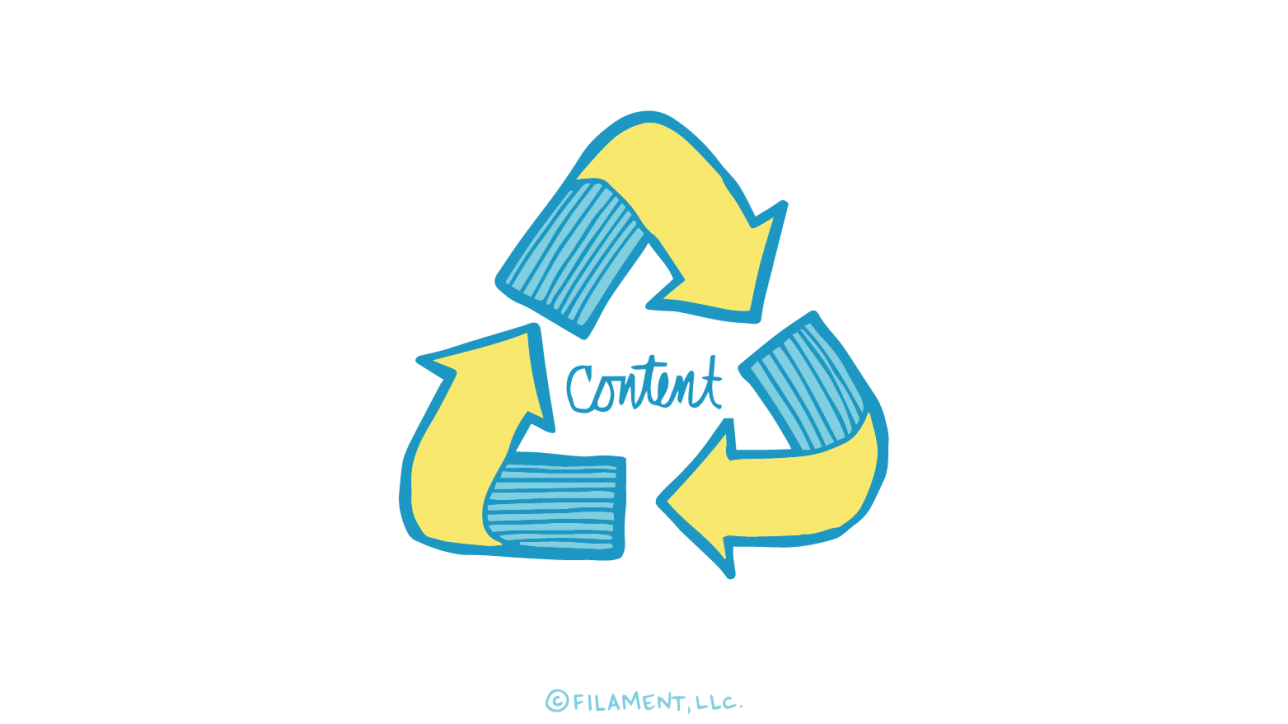Onward and upward! Step 6 for building an integrated digital campaign is to create content that can be easily repurposed. Repurposing content helps you get as much as possible out of every piece of content you create, and it allows for better integration, which is our goal. In this post, we’ll discuss what we mean by content that can be repurposed, why it’s important, and how to create it.
What?
To start with, let’s define repurposeable content. Content that can be repurposed is flexible content that can be used in as many places as possible—social media, email marketing, your website. It involves altering a piece of content to make it fresh by giving it new angle and/or a new format. For example, you can turn a single popular blog post into a whitepaper, slideshow, infographic, videographic, video, podcast, and a webinar.
Potential Content Types for Repurposing:
• Blog posts
• Whitepapers
• eBooks
• Videos
• Infographics
• Videographics
• Slideshows
• Podcasts
Why?
Why would we want to create content that can be repurposed? For starters, creating content takes a lot of resources. It requires time and money to come up with ideas, do the research, create the content, and then promote that content. Creating content you can repurpose again and again saves you money since you can use the research for your original piece of content for other content projects.
Secondly, content that can be repurposed makes the content creation time for all the repurposed forms shorter, which frees up time for other important tasks, such as coming up with more new ideas for future content. Parts of your content that you’ve already created, such as images, quotes and text, can be applied to related content.
Creating content that can be repurposed also expands your reach since you’re able to get in front of segments of your audience that prefer other forms of content. As such, it lets you serve up content to multiple audiences and cross-promote your content across channels. For example, you can link to your original blog post from repurposed video you posted on YouTube or the slideshow you posted on SlideShare.
Content that can be repurposed tends to have greater longevity, too. Your target audience may have missed your original piece yet come across the content after it’s been altered and made available through a different channel.
Last but not least, repurposed content is a great tool for link building since you can include a link to your original piece of content from the altered form whenever possible.
How?
1. Create a plan.
A plan will help you streamline and align content across channels. Start by brainstorming general topics. As you evaluate topics, consider how they’ll translate across different key content types for your target audience. Then, brainstorm how each topic can be altered to fit your key content types and different segments of your audience. Identify the first piece of content you’ll make—typically the one that makes the most sense for your audience—and the repurposed forms that will come later.
2. Research.
As you research, keep your first piece of content in mind. It’ll take the most work since it requires the most research and development.
3. Repurpose.
Translate your original piece into key content types for your target audience, giving it a different angle or point of view depending on the channel and the target audience you want to appeal to.
A Final Word on Consistency
Creating content that can be repurposed makes your content do more work and lets you dig deeper into ideas and create content that’s relevant to a wider cross-section of your audience. However, no matter the forms your content takes, be sure it’s clear, compelling and consistent with your integrated brand identity. Focus on the same SEO keywords and phrases throughout your campaigns, and utilize whatever graphic elements you created for your brand.
Looking for some help in creating content that can be repurposed? Get in touch with Filament to find out how we can help you create content that shines.


